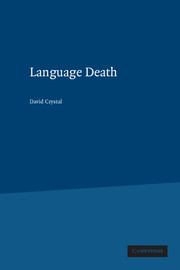Book contents
5 - What can be done?
Published online by Cambridge University Press: 05 November 2011
Summary
The preceding two chapters have raised a number of general considerations which are involved in the early stages of working with an endangered language. Chapter 3 drew attention to the range of factors which cause a language to decline; chapter 4 emphasized the effect of this process on people's attitudes. Both perspectives are needed before we are in a position to make informed decisions about when and how to intervene, in order to reverse language shift – or indeed about whether intervention is practicable or desirable.
Our decisions may be informed, but they are not always based on principles that are fully understood. There is still so much that we do not know. What motivates the members of a community to work for their language? Why do some communities become so involved and others do not? Sometimes the reasons are very clear: for example, a powerful combination of political and religious factors explain the rebirth and ongoing maintenance of Hebrew in modern Israel. But most endangered situations do not permit easy analysis. Nor is the range of factors and how they interact completely understood. We know a great deal about why languages become endangered and die, and why people shift from one language to another (see chapter 3), but we still know very little about why they are maintained, and why people stay loyal to them.
- Type
- Chapter
- Information
- Language Death , pp. 127 - 166Publisher: Cambridge University PressPrint publication year: 2000



